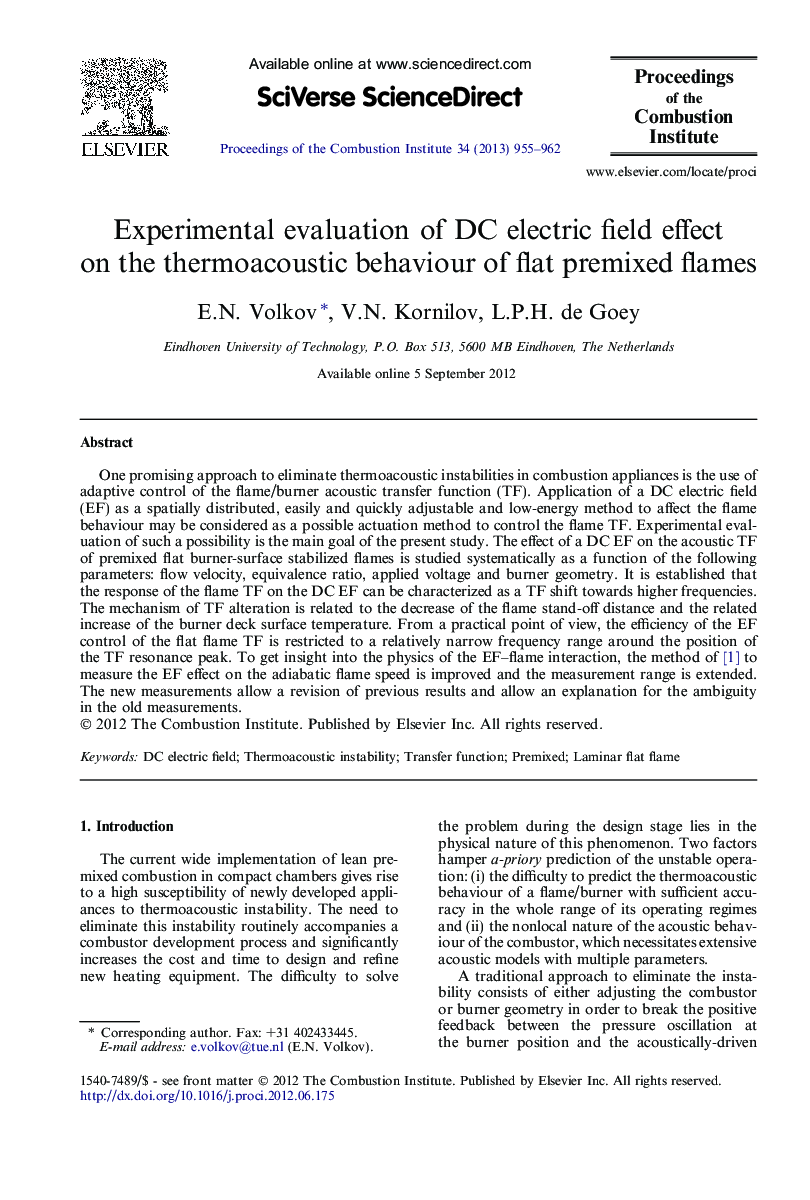| کد مقاله | کد نشریه | سال انتشار | مقاله انگلیسی | نسخه تمام متن |
|---|---|---|---|---|
| 241204 | 1427923 | 2013 | 8 صفحه PDF | دانلود رایگان |

One promising approach to eliminate thermoacoustic instabilities in combustion appliances is the use of adaptive control of the flame/burner acoustic transfer function (TF). Application of a DC electric field (EF) as a spatially distributed, easily and quickly adjustable and low-energy method to affect the flame behaviour may be considered as a possible actuation method to control the flame TF. Experimental evaluation of such a possibility is the main goal of the present study. The effect of a DC EF on the acoustic TF of premixed flat burner-surface stabilized flames is studied systematically as a function of the following parameters: flow velocity, equivalence ratio, applied voltage and burner geometry. It is established that the response of the flame TF on the DC EF can be characterized as a TF shift towards higher frequencies. The mechanism of TF alteration is related to the decrease of the flame stand-off distance and the related increase of the burner deck surface temperature. From a practical point of view, the efficiency of the EF control of the flat flame TF is restricted to a relatively narrow frequency range around the position of the TF resonance peak. To get insight into the physics of the EF–flame interaction, the method of [1] to measure the EF effect on the adiabatic flame speed is improved and the measurement range is extended. The new measurements allow a revision of previous results and allow an explanation for the ambiguity in the old measurements.
Journal: Proceedings of the Combustion Institute - Volume 34, Issue 1, 2013, Pages 955–962